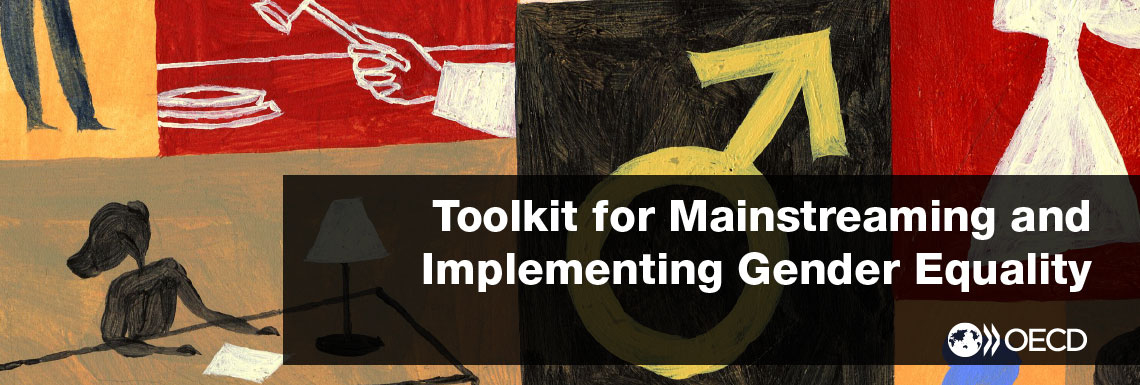Government performance is regularly assessed and monitored
SELF-ASSESSMENT QUESTION
- Does the national gender equality strategy establish a monitoring mechanism which tackles different levels of government?
- Does the national gender equality strategy include impact indicators?
- Have line ministries and other government institutions developed institutional indicators to translate national gender impact indicators into sector specific indicators?
- Have line ministries and other government institutions’ monitoring and evaluation units been trained on reporting on the implementation of gender equality goals;
- Do line ministries and other government institutions regularly engage in monitoring requirements?
WHY IS IT IMPORTANT?
Robust monitoring and evaluation mechanisms are vital for ensuring that gender equality strategies achieve their intended impacts. Monitoring assesses progress, improves decision making, allows programmes to be adjusted for greater impact, and enhances accountability and institutional learning. It also helps policy makers understand where resources are needed. The first step in monitoring is developing indicators and data.
ACTIONS TO CONSIDER
- Establish a national monitoring mechanism linked/ as part of the national gender equality strategy indicating institutional responsibilities for measuring progress;
- Establish and adequately resource a capacity development plan to strengthen government capacity to collect relevant data and information against set gender impact indicators;
- Strengthen the capacity of monitoring and evaluation units within line ministries and other government institutions to collect, manage relevantdata and regularly report on gender equality indicators;
- Line ministries and other government institutions adopt (sector) specific gender impact indicators in line with national gender equality indicators and international benchmarks.
PITFALLS TO AVOID
- Gender equality monitoring mechanism remains vague and roles and responsibilities inadequately defined;
- Insufficient allocation of (financial and human) resources to empower institutions’ monitoring capacity, assuming that adding a “gender focus” would not require additional resources;
- Focus only on “input indicators”, like number of trainings and number of beneficiaries, instead of “outcome indicators”, that describe the outcomes of these efforts;
- Line ministries and other government institutions’ monitoring capacity remain limited and lack focus on gender equality;
- Lack of clear leadership and accountability frameworks makes monitoring efforts ineffective and fragmented.
COUNTRY EXAMPLES
Sweden
The Swedish National Audit Office (NAO) is part of the central control power of the Swedish Riksdag (Parliament). It is an independent organization under the Riksdag and it ensures that the Riksdag receives a coordinated and independent audit of the state finances. NAO audits the whole chain of the executive power, through performance- and financial audits. NAO also contributes to the development of the parliamentary control power and the democracy of other countries through its international assignment. In 2015, Swedish NAO undertook an audit to assess whether conditions exist that make the results of specific gender policy measures sustainable and lead to permanent improvements. The Audit also aimed to evaluate the Government's design and management of the initiative was effective. Following the findings of the Audit which stressed the need for an institutional structure that strengthens gender equality work and recommendations of a Gender Equality Inquiry undertaken the same year, the Swedish Government, through its Budget Bill, stated its intention to establish a gender equality agency, to be operational from the beginning of 2018.
Austria
The system of performance management in Austria follows a clear structure which includes ex ante stategic plannig, as well as ex post internal evaluation processes. It involves everey ministry and supreme organ and focuses on gender equality. Developing of a strategy marks the first step in the process of performance management. Ministries and supreme organs determine their resource requirments within the strategy report, which is part of the federal medium-term expenditure framework act. This forms the basis for operationalizing the strategy within the process of the annual budget compilation. Every supreme organ and every ministry has to formulate at maximum five annual outcome objectives. At least one out of up to five annual outcome objectives has to concern gender equality. In the following step measures are formulated and relevnat indicators are determined in order to ensure pursuing the goals set. Outcome objectives and planned measures are translated into a performance mandate, which determines the actions taken by the ministries and supreme organs. The consistent pursuit and achievement of the outcome objectives is effected by the success of the implementation and realisaiton of the planned measures. The next step in the process is the evaluation of measures and outcomes. In this part of the process the outcome objectives, which were formulated in the beginng are compared to the actual outcomes using the determined indicators. The implementation and realisation of the measures is evaluated and degree of achievement is assessed annualy. The findings, knowledge and experience create the foundation for the evaluations in the following years.

